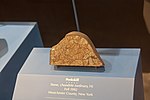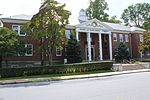Peekskill, New York

Peekskill is a city in northwestern Westchester County, New York, United States, 35 miles (56 km) from New York City. Established as a village in 1816, it was incorporated as a city in 1940. It lies on a bay along the east side of the Hudson River, across from Jones Point in Rockland County. The population was 25,431 at the 2020 US census, an increase over 23,583 during the 2010 census. It is the third largest municipality in northern Westchester County, after the towns of Cortlandt and Yorktown. The area was an early American industrial center, primarily for iron plow and stove products. The Binney & Smith Company, now named Crayola LLC and makers of Crayola products, is linked to the Peekskill Chemical Company founded by Joseph Binney at Annsville in 1864, and succeeded by a partnership by his son Edwin and nephew Harold Smith in 1885. The well-publicized Peekskill Riots of 1949 involved attacks and a lynching-in-effigy occasioned by Paul Robeson's benefit concerts for the Civil Rights Congress, although the main assault following the September concert properly took place in nearby Van Cortlandtville. Nevertheless, the city of Peekskill has since had multiple African American mayors since 1984.
Excerpt from the Wikipedia article Peekskill, New York (License: CC BY-SA 3.0, Authors, Images).Peekskill, New York
Robin Drive,
Geographical coordinates (GPS) Address Nearby Places Show on map
Geographical coordinates (GPS)
| Latitude | Longitude |
|---|---|
| N 41.283333333333 ° | E -73.916666666667 ° |
Address
Robin Drive
Robin Drive
10566
New York, United States
Open on Google Maps







